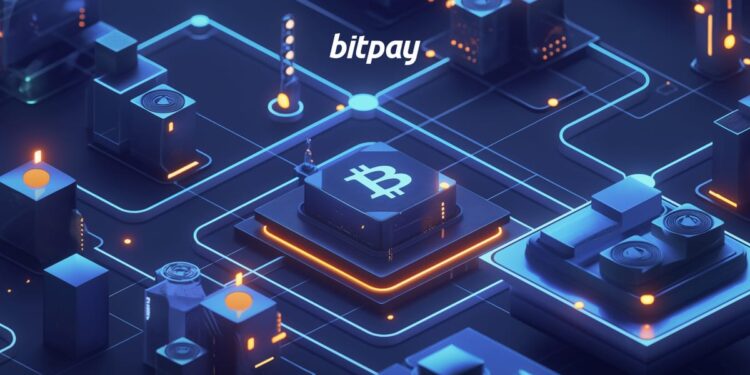Bitcoin nodes are essential for validating transactions and maintaining the network’s integrity, with various types like full, light, and mining nodes each playing specific roles.
Individuals can run their own Bitcoin node to enhance privacy, security, and contribute to the network’s decentralization, with accessible setup methods for all technical levels.
Running a node offers improved transaction verification for users and strengthens the network’s resilience, security, and resistance to censorship.
The concept of a Bitcoin node can be mysterious for those new to the technology. But it’s an important one to comprehend for anyone seeking to gain a more in-depth understanding of the network.
In this article, we will cover the basics of nodes: what they are, how they work, why they’re important, and how to run a Bitcoin node for those interested.
What are Bitcoin Nodes?
There is no single server or network of servers in charge of Bitcoin. The network operates on a peer-to-peer (P2P) basis. With Bitcoin, people engage with each other directly instead of via an outside third-party who can control the network. Bitcoin nodes are the mechanism that make this dynamic possible.
Nodes are like independent computer servers that make up the network. Any individual with an internet connection and the appropriate hardware can choose to run their own node. The entire Bitcoin network is made up of independent node operators, rather than a single entity like a company or institution.
The Importance of Bitcoin Nodes
Bitcoin nodes are not just important – they are the very network itself. Nodes verify transactions and blocks while enforcing the rules of the protocol. If a transaction doesn’t follow the rules, it will be rejected. Nodes cooperate to achieve network consensus on which transactions are valid.
Anyone may validate blocks and download the entire Bitcoin blockchain – a record of every transaction that has ever occurred. As more copies of the ledger exist and can be referenced by others, this strengthens the network’s decentralization and security.
How many Bitcoin nodes are there?
As of Februrary 2024, there are currently approximately 18,000 public nodes running on the Bitcoin network. This number is regularly updated and accounts for duplicate and non-listening nodes.
As more people join the network, the more nodes and miners are needed to keep the network functioning and decentralized. For this reason, many Bitcoin enthusiasts choose to run their own full nodes. We’ll cover more on how to run your own node later.
Types of Bitcoin Nodes
When someone uses the term “node,” they are often referring to an archival full node. Archival full nodes are servers that store a copy of the blockchain in its entirety, with every single transaction recorded in their databases. The primary task of these nodes involves validating blocks and maintaining consensus.
But there are other types of nodes as well. A few of these include:
- Light Nodes. Lightweight nodes or “light nodes” don’t hold full copies of the blockchain. Light nodes only download blockheaders, saving users storage space and download time. These nodes depend on full nodes to function and are used for simplified payment verification (SPV).
- Pruned Full Nodes. A pruned full node is one that uses less hard drive space by “pruning” older blocks in the chain. This type of node will first have to download a copy of all transactions in the blockchain. Then it will start deleting blocks beginning with the oldest and continue until the node only holds the most recent transactions up to a predetermined limit. If a node operator were to set the size limit to 300 MB, then a pruned node would only contain the most recent 300 MB worth of transactions.
- Mining Nodes. In crypto mining, miners are either full or light nodes that try to prove they’ve completed the work required to create a new block. This is where the term “proof-of-work” originates. To perform this task, miners must either be an archival full node themselves, or get data from other nodes to learn the current status of the blockchain so they can determine how to work on finding the next block.
💭
Miners also perform the necessary work to find the next block of transactions. Miners are a very important node type, as they provide security through the energy required to perform their proof of work.
Running Your Own Node
There are many reasons why someone might want to learn how to run a Bitcoin node. For example, running a node creates greater privacy for Bitcoin transactions. This is true because when sending transactions through your own node, outside observers have a hard time differentiating your transaction from all the others going through the same node. It also can be considered a more secure way of sending transactions, as the node operator no longer needs to trust a foreign node.
Many choose to run their own node out of a sense of duty to the Bitcoin network. Each additional node on the network makes Bitcoin a little stronger and more decentralized. It’s a simple way to help ensure that yourself and others can continue to make censorship-resistant, cross-border peer-to-peer financial transactions.
While it may seem like a daunting task to those less technically-inclined, the process is rather simple. To run your own node, here’s what you will need:
- A computer like a Rapberry Pi or an old laptop
- A hard drive with at least 1 TB of disk space
- A power supply for the chosen computer
- The appropriate connectors and cables (e.g., ethernet cable, power cable, hard drive enclosure)
There are multiple ways to set up a Bitcoin node. Specific details will vary based on which type of node you wish to set up (as we covered earlier).
For this example, we’ll assume that someone will be setting up a full archival node on the Bitcoin network using a Raspberry Pi for hardware and Umbrel for software.
There are several node packages available for sale that come with all the necessary components for running a node. Purchasing one of these and watching instructional videos on YouTube can make the process easy enough for just about anyone to complete. Here we’ll provide a summarized version of the process.
- Acquire the necessary hardware
In this case, that would be a Raspberry Pi, a hard drive with at least 1 TB of storage space, power supply, an ethernet cable to connect the node to a network router, a Micro-SD card and connector, and a hard drive enclosure and cable to connect the drive to the node. An enclosure for the Raspberry Pi can be a good option too, as it will protect the node from physical damage. - Assemble the node
This involves putting all the pieces together. Instructional videos can be helpful here. - Connect the node to an internet connection
Plug the node into your network router via ethernet. - Set up the software
Access the software that will be used to run your node from a computer connected to the same network as the node. Umbrel is a free, user-friendly option. - Transfer to the Rasberry Pi
To use Umbrel, users must flash the software onto a micro-SD card on their computer, then transfer this SD card to the Raspberry Pi. - Access your node
Once Umbrel has been installed on the Raspberry Pi, users can access their node through Umbrel’s graphic-user-interface (GUI). Here you can see your node validating blocks in real time, every 10 minutes or so.
Bitcoin nodes wrapped up
The importance of Bitcoin nodes cannot be overstated. In a sense, there’s nothing more important for the network than to have an increasing number of geographically distributed independent node operators to improve security, decentralization, and community. One of the best ways someone can contribute to the Bitcoin ecosystem is by choosing to run their own node.















